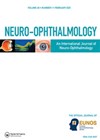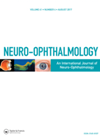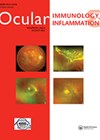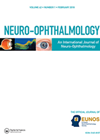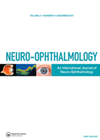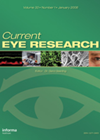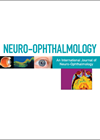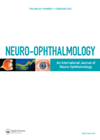Do occult neuroretinitis and non-arteritic anterior ischaemic optic neuropathy differ in presentation?
This study evaluates differences between neuroretinitis and non-arteritic anterior ischaemic optic neuropathy (NAAION) in terms of patient demographics, clinical presentation, and optical coherence tomography (OCT) findings. Medical records of patients with a final diagnosis of occult neuroretinitis or NAAION were...
Use of international interocular difference thresholds for optic neuritis diagnosis in clinical practice
Multiple sclerosis (MS) is the most common non-traumatic cause of disability in young people, and visual symptoms can be the initial manifestation in up to 20% of cases. Retinal examination can be helpful in making the correct diagnosis. The latest...
Sub-clinical detection methods in multiple sclerosis
Visually symptomatic multiple sclerosis (MS) provides only part of the required information to assist in understanding the disease. Recently, researchers have concentrated their efforts on diagnosing MS cases in the subclinical period. The aim of this paper was to assess...
Distribution, progression, and outcomes of inflammatory chorioretinal lesions
This study investigated the distribution and progression of multifocal choroiditis (MFC) inflammatory lesions in 25 eyes of 20 patients and their correlations with clinical outcomes at 24 months. The distribution of choroiditis inflammatory lesions were evaluated semi-automatically using a dedicated...
Does religious fasting affect intraocular pressure or retinal parameters?
Nearly one billion Muslims fast every year during the month of Ramadan. Due to the difference between the lunar and solar calendars, religious fasting time can range from 11 to 17 hours per day. This prolonged abstinence from food and...
Using optical coherence tomography angiography to detect MoyaMoya vasculopathy
Moyamoya (MM) disease is a chronic cerebrovascular disease that can lead to progressive stenosis of the terminal portions of the internal carotid arteries and their proximal branches. The authors carried out a cross-sectional cohort study to investigate vascular changes in...
Occult central retinal artery occlusion
Central retinal artery occlusion (CRAO) is a sight-threatening condition resulting from occlusion of the central retinal artery and hypoperfusion of the inner retina. Early on, fundal examination may be normal. The authors present a retrospective case series of 11 patients...
OCT biomarkers in asymmetric anti-VEGF response in bilateral diabetic macular oedema
This study aimed to identify optical coherence tomography (OCT) biomarkers for predicting response to anti-VEGF treatment in diabetic macular oedema (DMO). Bilateral DMO patients with asymmetric response to a loading dose of anti-VEGF (ranibizumab / aflibercept) treatment were retrospectively studied....
Outcomes of treat & extend ranibizumab in diabetic macular oedema
This study retrospectively evaluated 118 eyes of 87 patients who received ranibizumab in a treat and extend regimen for diabetic macular oedema (DMO). Data were collected for patients under follow-up for 24 months. After 24 months, patients gained a mean...
Investigating the effect of signal strength on mean retinal nerve fibre layer
The aim of this study was to determine the effect of signal strength on mean retinal nerve fibre layer (RNFL) using spectralis optical coherence tomography (S-OCT). Thirty normal subjects were imaged with S-OCT using variably dense Bangerter foils to alter...
An atypical presentation of Vogt-Koyanagi-Harada Disease
The authors present a single case of atypical presentation of Vogt-Koyanagi-Harada disease. A 42-year-old female presented with unilateral visual loss associated with systemic symptoms of fever and headache. Initial ophthalmic examination revealed a unilateral neuroretinitis, however, investigations for infectious and...
Retinal changes in Leber hereditary optic neuropathy
The objective of this study was to describe the changes in the retinal ganglion cell complex (GCC) relative to the retinal nerve fibre layer (RNFL) over time, in patients with Leber’s hereditary optic neuropathy (LHON). For this study, 21 patients...


